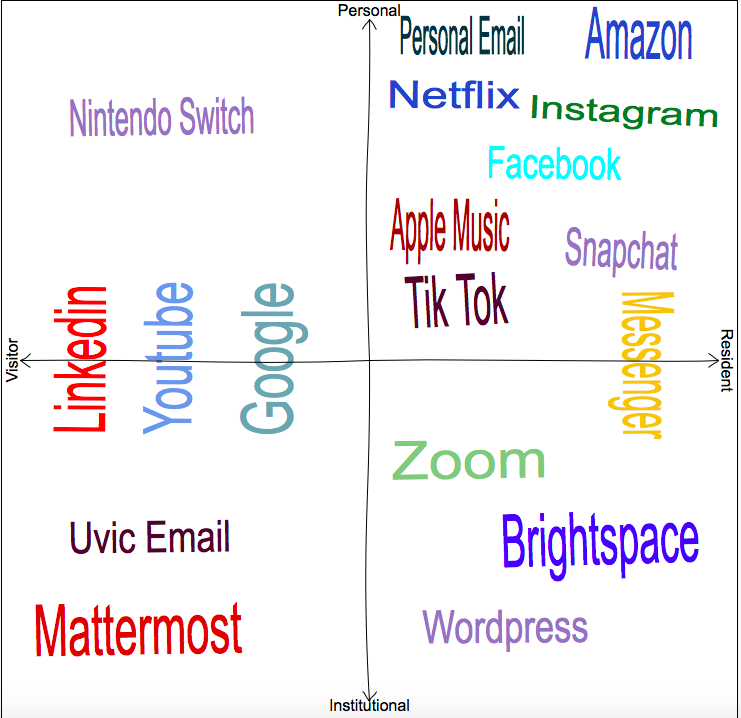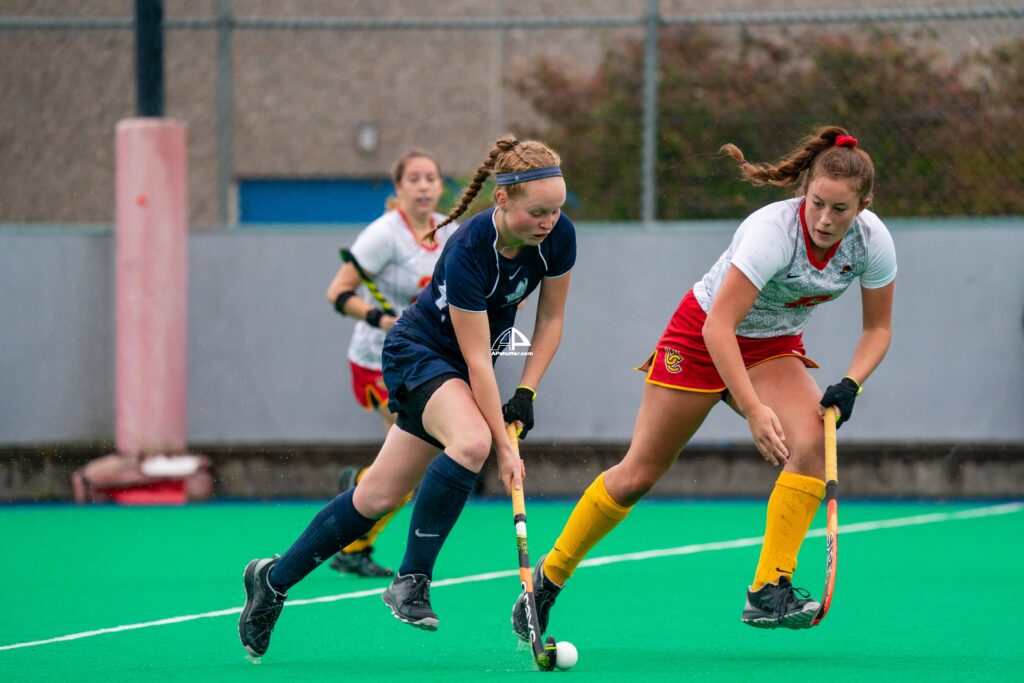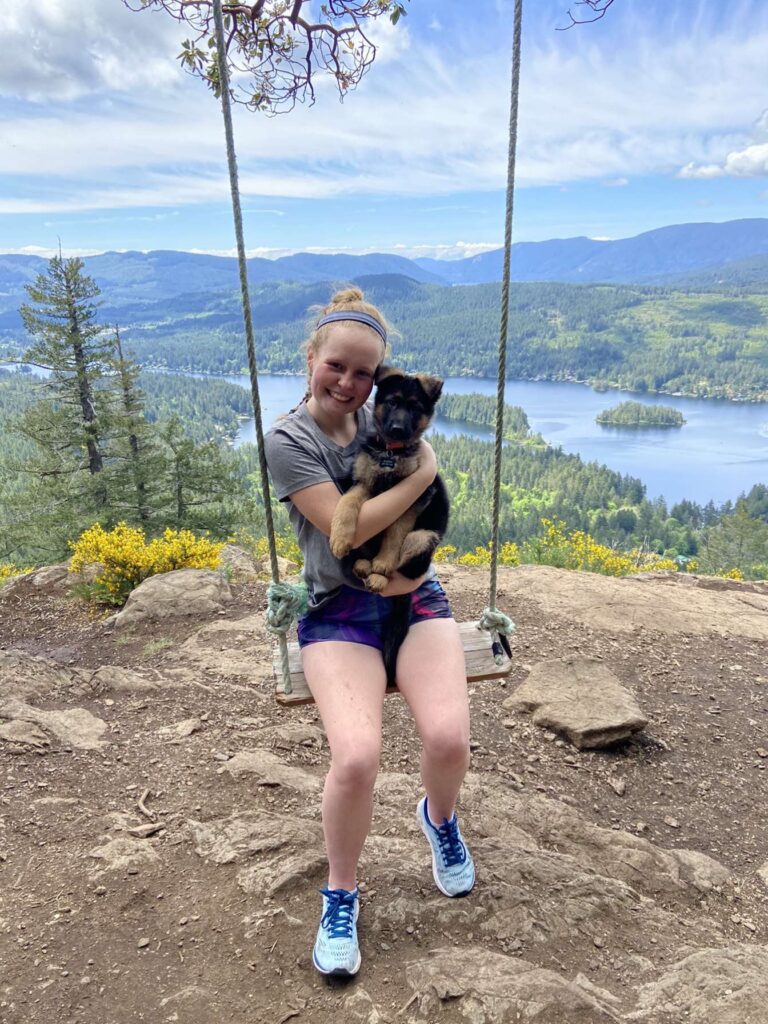What does it mean to network using social media?
In a generation where social media is so ingrained into our lives, I think social media is an important networking tool. Whether it is connecting with people we already know or finding new people online, there is an abundance of people we can network with and learn from. Networking using social media is the idea that even though we may not be physically connected, we are connected through our online personal learning network, and we can learn and meet people virtually through social media. I know that I personally have met new people and learned a lot through the use of social media such as LinkedIn, Instagram, and Facebook. I think social media networking can allow us to meet and connect with people across the world that we may have never been able to get to know or meet if it wasn’t for an online presence.
How are we motivated to participate in networked publics?
I am very motivated to participate in networked public because it gives me a sense of connection. The article by Gutierrez (2016) discusses how having a personal learning network allows you to stay up to date on information in your field, provides continuous learning, can help you find answers to questions, and gain meaningful connections. I know for me all of these factors motivate me to have an online network. Further, I think our world revolves around the internet so much that if you choose not to have an online network, you may miss out on important information and learning opportunities in your field.
What are the risks & rewards of public communications?
I think one of the risks associated with public communications is you are never guaranteed to be talking to the person you may think you are. Just because someone says they are someone, doesn’t mean they are and I think that is a big risk when networking and communicating with people you have not necessarily met face to face. Boyd (n.d.) discussed how even our private data is increasingly networked and we will never be able to have complete control over the information that is shared online. This can become a significant risk when we are sharing personal or private information that we do not want others to know about. Lastly, I think another risk could be cyberbullying, as people are able to hide behind their screen and not talk to you face to face, potentially saying hurtful or harmful things that can negatively affect someone.
As previously discussed, a personal learning network offers a huge amount of resources and people to network and connect with which I think is the biggest reward. We are able to connect with people across the world, who we would probably have never met or talked to before which can bring so many different views and experiences to learn from. A reward that was discussed by Gutierrez (2016) was the idea that you are able to acquire expert advice at any time instead of having to wait for a textbook or an article to come out in paper copy. Much more information and facts are able to get out sooner and more efficiently when we have an online presence because it is there in the touch of a button.
What is a digital identity?
The easiest way to describe a digital identity is that it is your online presence. Stoller (2016) discussed the idea that it is everything you personally do online such as the posts you make, the tools you use, and how you engage and treat other people online. An important aspect of digital identity is that it is 100% traceable and it doesn’t go away, so everything you have ever posted or searched can be found by schools, future employers, family etc.
How do personal versus professional approaches to digital identity affect social media use?
It is pretty well known now that before an employer will hire you, they are likely to search for your digital identity whether that is your blogs, social media posts or any other things you do online. Stoller (2016) explained how this can be a very positive thing for some individuals who have a good online presence and have made positive impacts and have great writing skills to get a job. On the other hand, he discusses how it can have severe negative effects on your ability to get a job if you have been posting things your future employer may not be happy to see.
I personally think it is important to have both a professional and personal digital identity. While you should still be careful what you are posting, a professional digital identity can look different from a personal. I use Instagram and Facebook as my personal digital identity, and I use LinkedIn as my professional digital identity. When reaching out to employers or trying to network online, I will only use my LinkedIn account whereas when I am posting pictures of a holiday or something for my family and friends to see, I will use either Instagram or Facebook. I feel that as an individual, you want to choose to use a different approach on your social media when using your professional accounts vs your personal accounts.
How do digital identities converge in networked publics – what are the impacts and/or benefits?
Digital identities for the most part are very positive and impactful. Your digital identity sometimes is the first thing someone will see of you and can make an immediate judgment on, before they even talk to you or meet you. This can be both beneficial or impactful. This could be beneficial in a way that someone can learn things about your life, career, and other interests before they connect with you which can lead to closer connections and better conversations. On the other hand, this can be impactful because people can judge you by an online presence before they even have a conversation with you. They could decide they don’t want to work with you or that they have this idea of what you are like and they haven’t even had a conversation with you. I think in general, being able to connect with people all across the world, in different time zones, who may speak different languages is one of the most beneficial aspects of a digital world because all of the resources we need for those conversations is at the touch of a button.
References
Boyd, D. (n.d.) Networked Privacy. Surveillance & Society 10(3/4). https://ojs.library.queensu.ca/index.php/surveillance-and-society/article/view/networked/networked
Gutierrez, K., (2016). What are Personal Learning Networks? https://www.futurelearn.com/info/courses/learning-network-age/0/steps/24644. Accessed 20 January 2021.
Stoller, E. (2016, November 25). Eric Stoller – What is Digital Identity? [Video]. Youtube. https://www.youtube.com/watch?v=u0RryRbJza0




Recent Comments